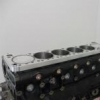Project Rb31dett. The Development Of My Open Deck Rb Engine And The Quest For More Torque!
Announcements
-
Similar Content
-
Latest Posts
-
perhaps i should have mentioned, I plugged the unit in before i handed over to the electronics repair shop to see what damaged had been caused and the unit worked (ac controls, rear demister etc) bar the lights behind the lcd. i would assume that the diode was only to control lighting and didnt harm anything else i got the unit back from the electronics repair shop and all is well (to a point). The lights are back on and ac controls are working. im still paranoid as i beleive the repairer just put in any zener diode he could find and admitted asking chatgpt if its compatible i do however have another issue... sometimes when i turn the ignition on, the climate control unit now goes through a diagnostics procedure which normally occurs when you disconnect and reconnect but this may be due to the below to top everything off, and feel free to shoot me as im just about to do it myself anyway, while i was checking the newly repaired board by plugging in the climate control unit bare without the housing, i believe i may have shorted it on the headunit surround. Climate control unit still works but now the keyless entry doesnt work along with the dome light not turning on when you open the door. to add to this tricky situation, when you start the car and remove the key ( i have a turbo timer so car remains on) the keyless entry works. the dome light also works when you switch to the on position. fuses were checked and all ok ive deduced that the short somehow has messed with the smart entry control module as that is what controls the keyless entry and dome light on door opening you guys wouldnt happen to have any experience with that topic lmao... im only laughing as its all i can do right now my self diagnosed adhd always gets me in a situation as i have no patience and want to get everything done in shortest amount of time as possible often ignoring crucial steps such as disconnecting battery when stuffing around with electronics or even placing a simple rag over the metallic headunit surround when placing a live pcb board on top of it FML
-
Bit of a pity we don't have good images of the back/front of the PCB ~ that said, I found a YT vid of a teardown to replace dicky clock switches, and got enough of a glimpse to realize this PCB is the front-end to a connected to what I'll call PCBA, and as such this is all digital on this PCB..ergo, battery voltage probably doesn't make an appearance here ; that is, I'd expect them to do something on PCBA wrt power conditioning for the adjustment/display/switch PCB.... ....given what's transpired..ie; some permutation of 12vdc on a 5vdc with or without correct polarity...would explain why the zener said "no" and exploded. The transistor Q5 (M33) is likely to be a digital switching transistor...that is, package has builtin bias resistors to ensure it saturates as soon as base threshold voltage is reached (minimal rise/fall time)....and wrt the question 'what else could've fried?' ....well, I know there's an MCU on this board (display, I/O at a guess), and you hope they isolated it from this scenario...I got my crayons out, it looks a bit like this... ...not a lot to see, or rather, everything you'd like to see disappears down a via to the other side...base drive for the transistor comes from somewhere else, what this transistor is switching is somewhere else...but the zener circuit is exclusive to all this ~ it's providing a set voltage (current limited by the 1K3 resistor R19)...and disappears somewhere else down the via I marked V out ; if the errant voltage 'jumped' the diode in the millisecond before it exploded, whatever that V out via feeds may have seen a spike... ....I'll just imagine that Q5 was switched off at the time, thus no damage should've been done....but whatever that zener feeds has to be checked... HTH
-
I think Fitmit had some, have a look on there (theyre Australian as well)
-
By soviet_merlin · Posted
Hah, fair enough! But if you learn with this one you can drive any other OEM manual. No modern luxury features like auto rev-matching or hillstart assist to give you a false sense of confidence. And a heavy car with not that much torque so it stalls easily.
-




Recommended Posts
Create an account or sign in to comment
You need to be a member in order to leave a comment
Create an account
Sign up for a new account in our community. It's easy!
Register a new accountSign in
Already have an account? Sign in here.
Sign In Now